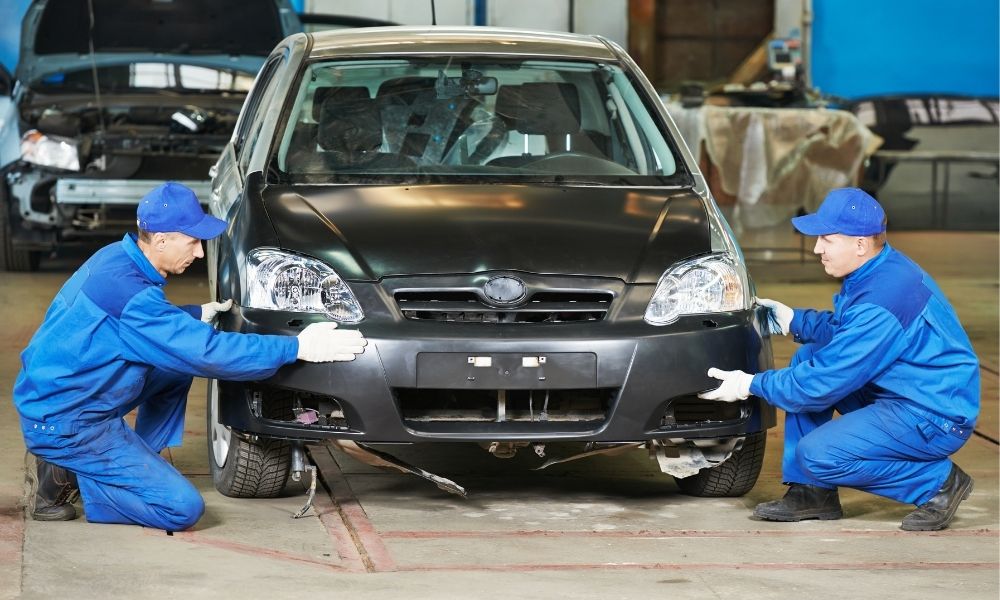When your vehicle sustains damage, whether from an accident or everyday wear and tear, seeking professional auto body repair is essential to restore its appearance and functionality. However, one of the most common concerns is understanding the cost of these repairs. At Cyclone Collision Center, we believe in transparency and helping our customers make informed decisions. Let’s delve into the factors that influence the pricing of auto body repairs.
1. Type and Extent of Damage
The primary factor influencing the cost of auto body repairs is the type and extent of the damage. Minor dents and scratches are typically less expensive to fix compared to major collisions that require extensive work. The severity of the damage directly impacts the labor time and materials needed for the repair. For example, a small dent might only require a quick fix, whereas a significant collision could involve replacing parts, extensive labor, and even frame straightening.
2. Make and Model of the Vehicle
The make and model of your vehicle also play a crucial role in determining repair costs. Luxury and high-end vehicles often come with higher repair costs due to the premium materials used and the complexity of the components. Additionally, certain models may require specialized parts that are more expensive and harder to source. For example, repairing a high-end sports car will likely cost more than fixing a standard sedan due to the difference in parts and labor.
3. Labor Costs
Labor costs can vary significantly based on the location of the repair shop and the level of expertise required. Shops located in urban areas or regions with a higher cost of living may charge more for labor. Additionally, highly skilled technicians with specialized training may command higher rates. At Cyclone Collision Center, we ensure that our technicians are well-trained and experienced, providing high-quality repairs at competitive rates.
4. Parts and Materials
The cost of parts and materials is another critical factor. Depending on the damage, your vehicle may require original equipment manufacturer (OEM) parts, aftermarket parts, or used parts. OEM parts are generally more expensive but offer a perfect fit and meet the manufacturer’s standards. Aftermarket parts, while cheaper, may vary in quality and fit. Additionally, the materials used for repairs, such as paint and primer, can also influence the overall cost.
5. Insurance Coverage
Insurance coverage can significantly impact the out-of-pocket cost for auto body repairs. Comprehensive and collision insurance policies typically cover most repair costs, minus the deductible. However, the specifics of your policy, including coverage limits and exclusions, will determine how much you will need to pay. It’s essential to review your insurance policy and work with your repair shop to understand the coverage details.
6. Repair Shop’s Reputation and Certifications
The reputation and certifications of the repair shop can influence the pricing. Established shops with a strong reputation, like Cyclone Collision Center, may charge more due to their proven track record and customer trust. Additionally, shops with certifications from manufacturers or industry organizations often ensure higher quality repairs, which might come at a premium.
7. Additional Services
Additional services, such as rental car arrangements, towing, and warranty on repairs, can also add to the overall cost. While these services provide convenience and peace of mind, they do contribute to the total repair bill. At Cyclone Collision Center, we strive to offer comprehensive services that cater to our customers’ needs, ensuring a smooth and hassle-free repair process.
8. Paint and Finish Work
Painting and finishing work can vary in cost depending on the color and type of paint used. Matching the exact color of your vehicle, especially for custom or metallic finishes, can be more labor-intensive and require higher-quality paint, leading to increased costs. The process of sanding, priming, painting, and clear-coating also adds to the labor hours needed.
9. Hidden Damages
Sometimes, the visible damage is just the tip of the iceberg. During the repair process, technicians may uncover hidden damages that were not apparent during the initial assessment. These unforeseen issues can add to the repair time and costs. It’s important to be prepared for potential additional expenses if hidden damages are discovered.
10. Customization and Upgrades
If you choose to customize or upgrade parts of your vehicle during the repair process, this will naturally increase the cost. Custom paint jobs, aftermarket enhancements, and performance upgrades are not typically covered by insurance and will be an additional expense.
Conclusion
Understanding the cost of auto body repairs involves considering various factors, from the type of damage to the make of your vehicle and the reputation of the repair shop. At Cyclone Collision Center, we prioritize transparency and quality, ensuring you receive the best service and value for your investment. By being aware of these influencing factors, you can make more informed decisions and budget effectively for any necessary repairs.
Next time you need auto body repairs, trust Cyclone Collision Center to provide expert service and clear communication, ensuring your vehicle is restored to its optimal condition.
